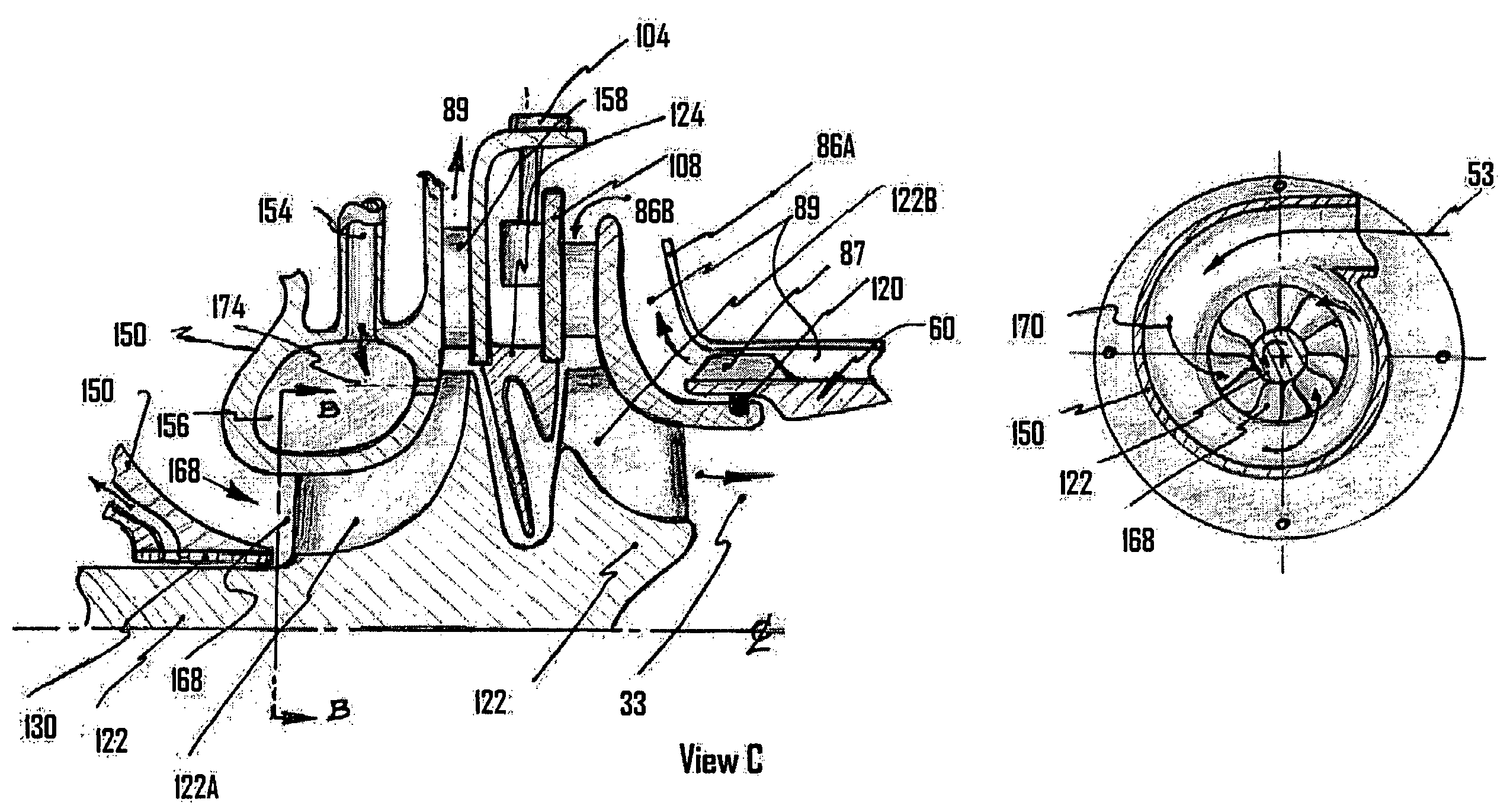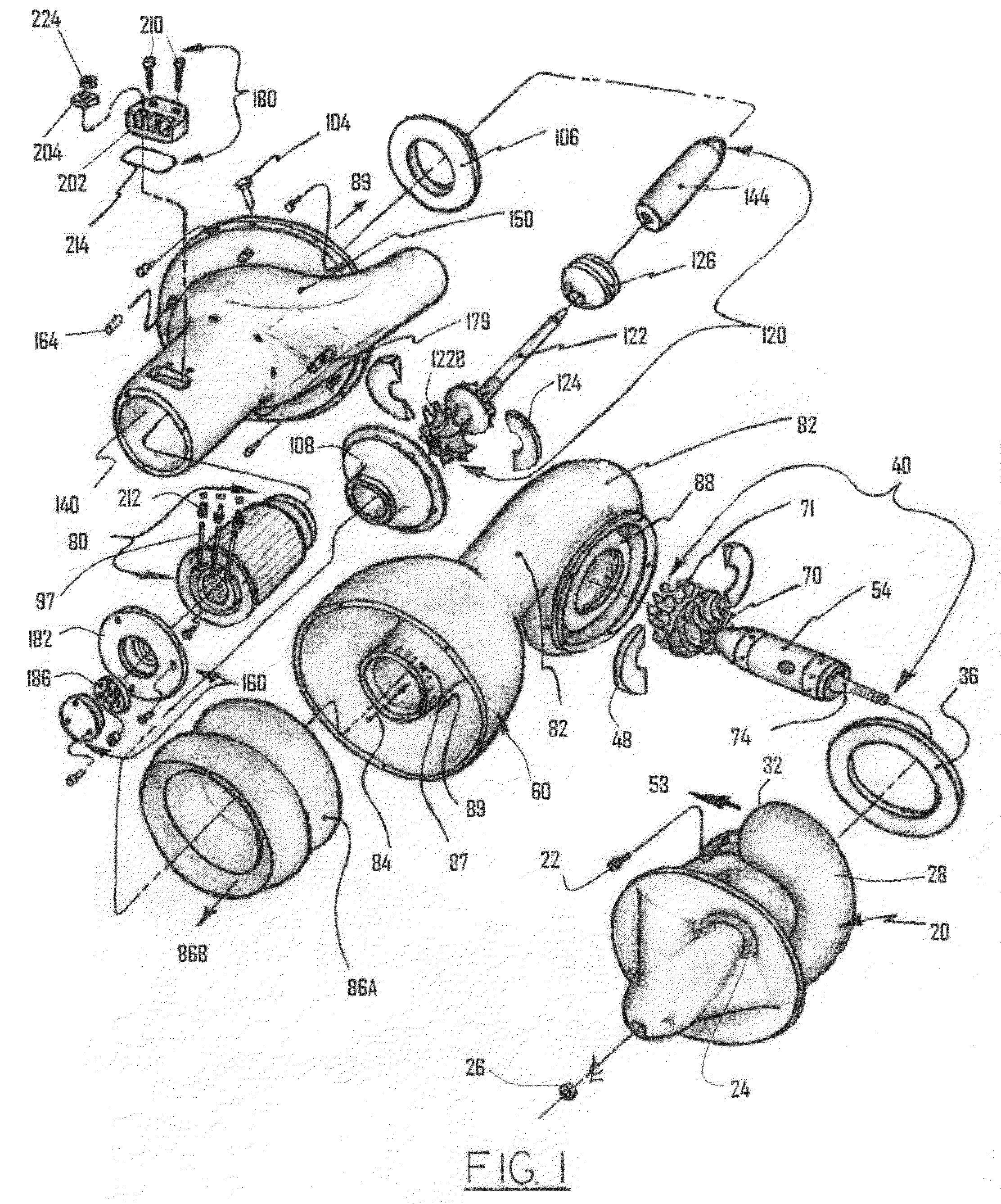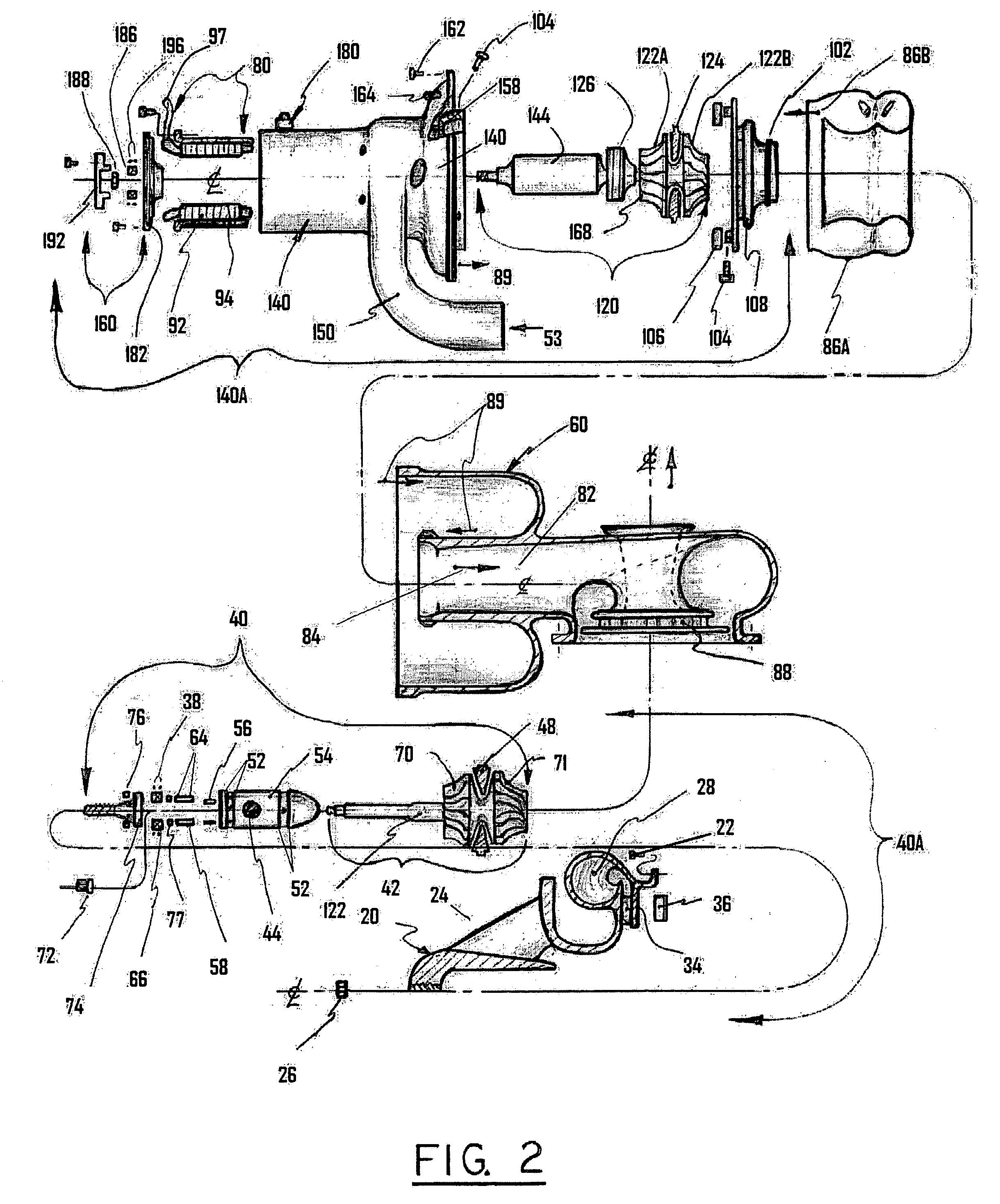Hybrid microturbine for generating electricity
a microturbine and hybrid technology, applied in the direction of machines/engines, stators, liquid fuel engines, etc., can solve the problems of high total system cost, low efficiency of parts, and inability to optimize parts power fuel economy, etc., to achieve low emission, increase cycle pressure ratio, and low weight
- Summary
- Abstract
- Description
- Claims
- Application Information
AI Technical Summary
Benefits of technology
Problems solved by technology
Method used
Image
Examples
Embodiment Construction
[0045]Turning now descriptively to the drawings, in which similar reference characters denote similar elements throughout the several views, the attached figures illustrate a hybrid microturbine electric power generating system, having two rotor spools, one as a turbo charger, the 2nd rotor spool with an integral alternator all of which are housed electrical stator coaxially positioned about this rotor to create electrical power.
[0046]The 2nd rotor spool assembly and electrical stator assembly with cooling sleeve and electrical power out leads are retained in the #2 housing along with the 2nd compressor diffuser and 2nd turbine nozzle. The #1 spool module communicates with the #2 compressor inlet and as a turbo charger creates compressed air / working fluid and is positioned in the #1 housing with a compressor diffuser and turbine nozzle. The combustor housing attaches to the #1 and #2 spool housing modules and combustor where fuel is supplied to develop heat energy to drive the 1st a...
PUM
 Login to View More
Login to View More Abstract
Description
Claims
Application Information
 Login to View More
Login to View More - R&D
- Intellectual Property
- Life Sciences
- Materials
- Tech Scout
- Unparalleled Data Quality
- Higher Quality Content
- 60% Fewer Hallucinations
Browse by: Latest US Patents, China's latest patents, Technical Efficacy Thesaurus, Application Domain, Technology Topic, Popular Technical Reports.
© 2025 PatSnap. All rights reserved.Legal|Privacy policy|Modern Slavery Act Transparency Statement|Sitemap|About US| Contact US: help@patsnap.com



